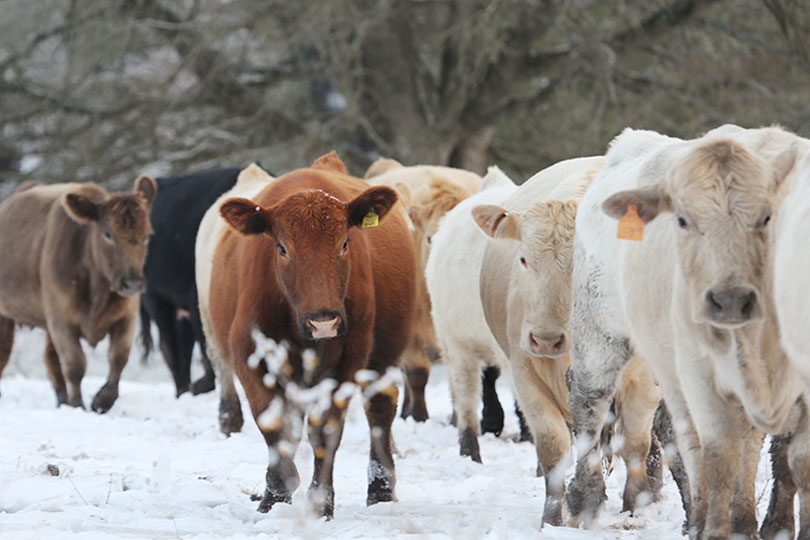By Jennifer Whitlock
Field Editor
Central Texas farmers and ranchers are still cleaning up and assessing damages after an icy blast of winter weather hit the Lone Star State two weeks ago.
But many managed better than initially expected, according to Dr. Shane McClellan, Texas A&M AgriLife Extension Service agent in McLennan County.
“The weather forecast just told us it was going to be cold, and we knew it was coming. It ended up being here a little faster than we were expecting,” he said. “Then, it was much colder than we expected. But overall, you can say that our farmers and ranchers fared better than what it could have been.”
Ranchers were in a rush to beat the cold weather, putting out hay and additional feed to prepare animals for the upcoming storm. Then, once the ice started falling, McClellan said it was important to keep hay and feed readily available so cattle and other livestock would continue to keep warm.
But it wasn’t an easy task to accomplish.
“A lot of our farmers and ranchers had to fight hay bales the whole time they were putting them out, because all those hay bales were covered in ice and snow. So, you’d have to fight that frozen wrap to get it off the bales and put it out,” he said in an interview with the Texas Farm Bureau Radio Network. “Of course, they were operating in those cold and frigid conditions. That’s hard enough on the livestock producer, but they were out there two to three times a day putting out hay, putting out feed. A lot of them were feeding twice a day in pretty bad driving conditions, endangering themselves just to care for their livestock.”
The first half of the week was the worst part of the storm for Central Texas. McClellan noted after ice had already fallen, a fine, powdery snow blew in. It coated everything in a treacherous layer of thick ice topped with a substantial layer of snow.
“It was hard on those calves and lambs that were born Monday and Tuesday, and we did lose some newborns. It was only 1 degree Fahrenheit on Tuesday, so if they didn’t get up and nurse right away, get some warm milk in their body to start warming up, it was really tough on them,” he said.
Although McClellan thought he had prepared his own livestock and shelters well enough, after the storm hit, he said he quickly felt overwhelmed.
“We had heifers calving and several sheep that lambed early, about a week earlier than I had planned. I had heat lamps up, and I thought I was ready. The cattle had access to either barns or shelters to get out of the weather, and they were okay,” he said. “But a lot of my lamb crop didn’t make it, because they were born on Monday or Tuesday. It was so cold, and we didn’t have access to electricity. So, I couldn’t get them to a heat lamp.”
McClellan and his children rescued four orphaned lambs on their Central Texas farm one evening.
“We got them in the vehicle, on the floorboard where the heater could get to them and warmed them up a little and took them home to bottle-feed,” he said. “We had four lambs, several pets, my wife and kids and myself around our fireplace for four or five days. It was quite an experience.”
Read more about the winter storm impacts on Rio Grande Valley citrus and onions grown in the Winter Garden.

